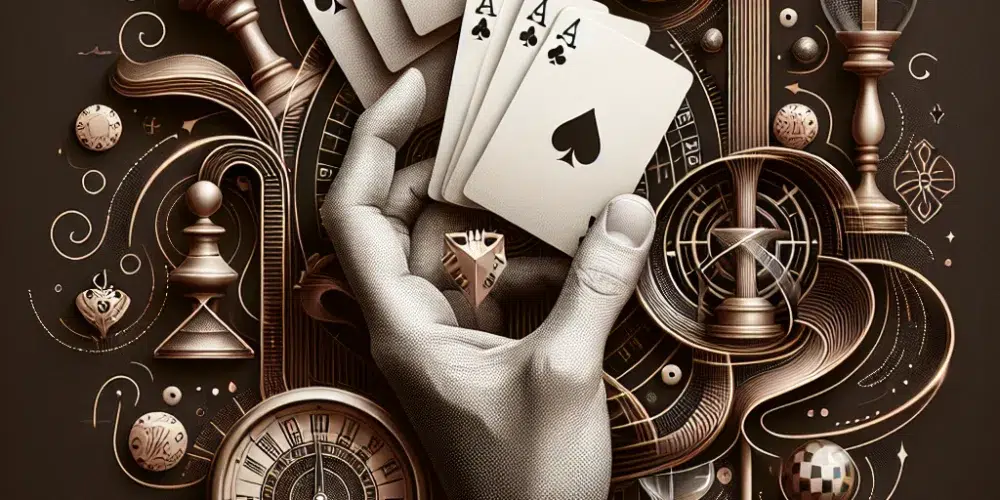Avoid the Insurance Bet: A Common Pitfall
A frequent blunder among new blackjack players is taking the insurance bet. When the dealer’s upcard is an ace, this side bet may seem tempting, but statistically, it’s a losing move in the long run. The insurance bet essentially involves betting that the dealer’s hole card is a 10, giving them blackjack. However, unless you are an expert in card counting, this bet increases the house edge against you. It’s better to stick with the primary game and focus on strategic play.
Understanding Basic Strategy
Basic strategy is your best tool when it comes to playing blackjack. This strategy comes from a statistical analysis of the most likely outcomes for any given situation in the game.
Hard Hands vs Soft Hands
Understanding the difference between hard and soft hands is crucial. A “soft” hand includes an Ace that can be counted as 11 without busting. These hands are more flexible, allowing more aggressive plays like doubling down. Contrary, a “hard” hand without Aces, or an Ace valued at 1, limits your actions mainly to hitting or standing.
When to Hit or Stand
Always hit a hard 11 or less. For soft hands, considering the high flexibility of the Ace, standing on a soft 19 (Ace and 8) or higher is more beneficial. When dealing with a hard 12 to 16, if the dealer has a 2-6, it’s often safe to stand; if the dealer has 7-Ace, take a hit.
Mastering the Art of Doubling Down
Doubling down allows you to double your bet in the middle of a hand in exchange for one extra card. It’s a risk, but used wisely, it can be very profitable.
Optimal Doubling Down Scenarios
The perfect time to double down is when you have a total of 11, and the dealer shows a card less than 10. Also, consider this strategy with a soft 16 through 18 if the dealer shows a low card. Doubling on hard 9 (if the dealer has 2-6) can also tilt the odds in your favor.
Splitting Pairs Wisely
Whenever you are dealt a pair, you have the option to split it into two separate hands, potentially doubling your chance to beat the dealer. However, not all pairs should be split.
When to Split and When to Avoid
Always split Aces and 8s. Aces give you two chances to hit 21, and 8s remove the worst hand possible, the 16. However, never split 10s or 5s. With 10s, you’re already sitting on a solid 20, and splitting 5s could lead to two weak hands rather than one strong one.
Keep a Close Eye on Your Bankroll
Effective bankroll management is crucial. Preset your limits before playing and stick to them. If on a losing streak, don’t be tempted to bet more than you planned in hopes of recovering your losses.
Smart Betting Rules
Bet more when you are winning, and less when you are losing. Utilize a betting strategy like the 1-3-2-6 system or the Martingale system cautiously, understanding that while they might increase winnings during good streaks, they won’t change the house edge.
Reading the Dealer’s Tells
Although not a purely scientific technique, some players find value in reading subtle physical or behavioral cues from the dealer. Be observant, noticing if the dealer repeatedly checks their hole card or perhaps inadvertently gives away hints about their hand. However, rely primarily on your strategic game rather than trying to ‘read’ the dealer as your main strategy.
Incorporating these Techniques
By avoiding the insurance bet, mastering basic strategies, knowing precisely when to double down or split pairs, and managing your bankroll adeptly, you significantly enhance your chances of winning at blackjack. Remember, each game is an opportunity to apply these strategies, learn more, and potentially walk away with a satisfying win. So stay focused, play wisely, and enjoy the game.

David Harrison stands tall in gambling journalism, marrying his firsthand casino experiences with a deep understanding of betting psychology. His articles transform complex gambling jargon into engaging tales of strategy and chance, making the world of betting accessible and enjoyable. David’s knack for narrative extends beyond print, making him a sought-after speaker on gambling trends and future bets. In the realm of gambling, David is both a scholar and a storyteller, captivating readers and listeners alike.


